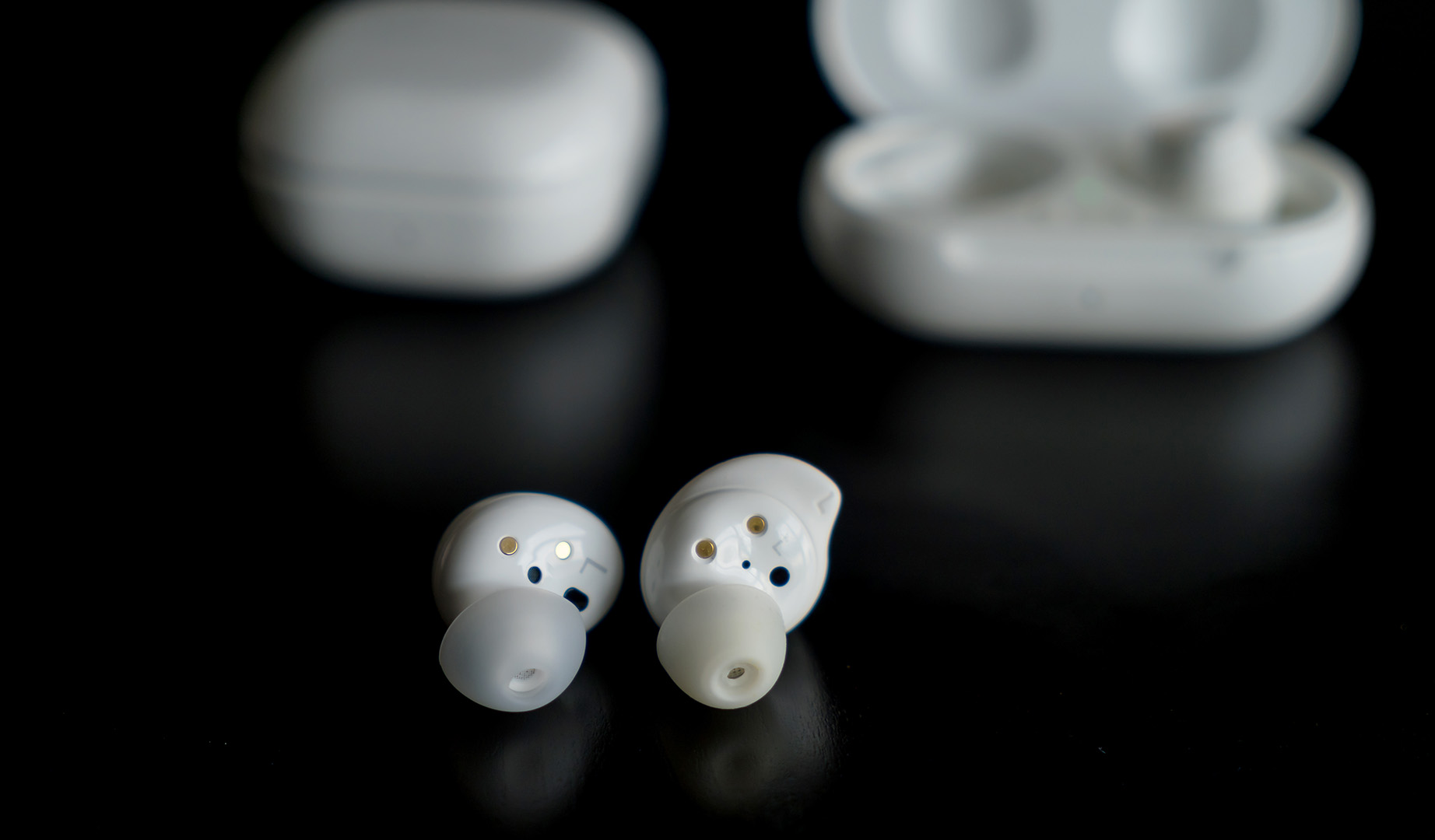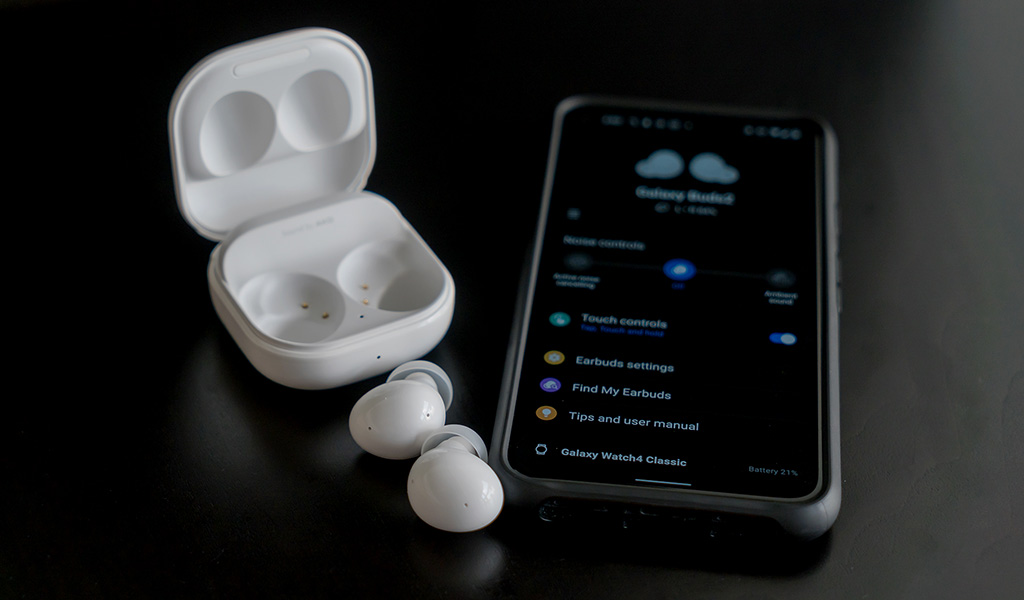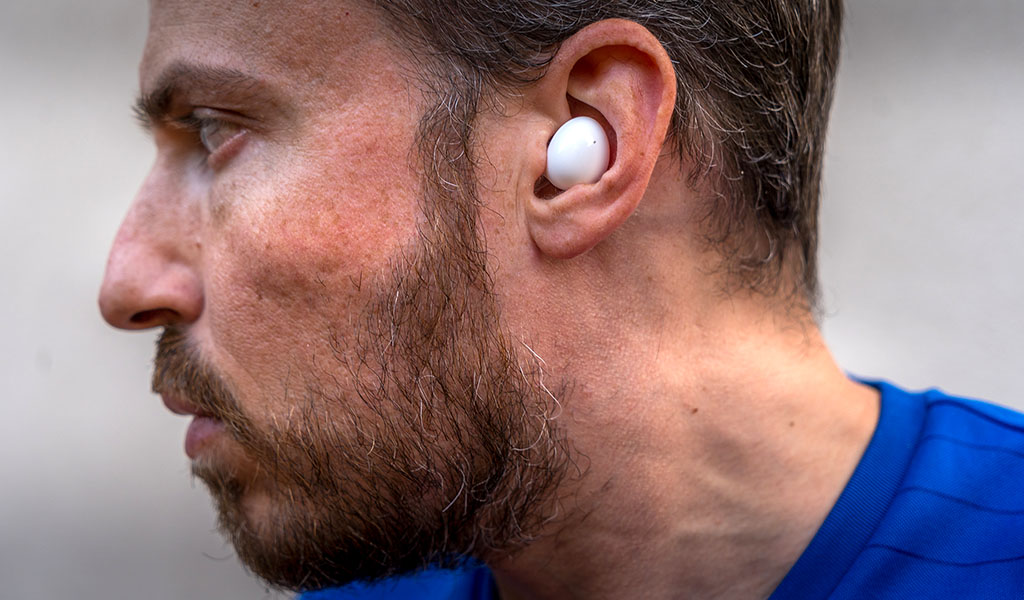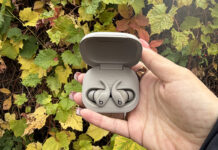
Samsung gives its entry-level Galaxy Buds2 better comfort and sound for all ears, pitting them among the best available in their class.
These earbuds take over from the Galaxy Buds+, which were a big step in the right direction for Samsung at the time they launched in Feb. 2020. Since then, Samsung released the Galaxy Buds Live and Galaxy Buds Pro, two distinct designs that stand out for other reasons. The Galaxy Buds2 aren’t supposed to replace either of those, but their features and consistency make them a really viable alternative.
Design and setup of the Samsung Galaxy Buds2
From a design standpoint, the Galaxy Buds2 have more in common with the Buds Pro than the Buds+. The main reason why is the angular curves and smaller frame that make these earbuds as small as they are. Despite that, Samsung did pack in a fair amount of power with better drivers, plus features like active noise cancellation and Ambient Sound mode.
They are well thought out in that they don’t need a lot of room to stay in place. While I would’ve preferred a matte finish over a glossy one, I can’t complain about the build quality. It’s just that glossy surfaces tend to be easier to mishandle or slip through your fingers.
The case is the same as the Buds Pro and Buds Live, as Samsung sticks to a well-received design choice. What’s odd is that it chose to make it white on the outside, regardless of the earbuds’ colour. My review unit was white all around, but had I used the graphite or olive ones (lavender isn’t for me), I would’ve lamented that the case’s veneer didn’t match.
Launch the Galaxy Wearable app and it’s a simple process to pair and set them up with some customizations, be it the equalizer or onboard touch controls, which I’ll get to later.

What’s new with the Galaxy Buds2
Samsung remodeled the inside of the earbuds to closely resemble what it did with the Buds Pro. That meant cutting some things out, like Voice Detect, the larger drivers, multi-level ANC, 360 Audio and some of the microphone nuances.
Compared to the Buds+, the obvious additions are that you can either block out background noise, or let it seep in. Active noise cancellation (ANC) is now standard on earbuds above $100, though not all include it. In this case, Samsung applies it in a similar way as it did with the Buds Pro, and the results aren’t all that dissimilar. You may get slightly better results with the Pro pair, but my ears didn’t discern a huge difference.
The size does make a difference. Samsung made these earbuds 10% smaller than the Buds+, and the resulting fit and comfort are excellent because of it. It also tried to reduce the number of false touches with the onboard touch-sensitive controls. They’re better at it this time, but there’s still work to do to get there.
Unlike the Buds+, the Galaxy Buds2 also integrate more with other Galaxy devices. You can automatically switch from one to another, so if you’re watching something on a Galaxy tablet, the earbuds will switch over to your Galaxy phone when a phone call comes in.

Connectivity and controls of the Samsung Galaxy Buds2
The Galaxy Wearable app continues to be the way to customize the Galaxy Buds2, and quick pairing on Android devices is getting quicker on top of that. You get to manually choose between ANC, Ambient and Off, though you’re more likely to focus on the seven equalizer presets for audio playback or setting up the touch controls.
You can turn those off completely if you find them annoying, only they’re not as bad here as before. Still finicky, sure, but at least a short step in the right direction. I recommend keeping them on because you can switch between ANC and Ambient Sound, or play and pause with simple taps on either bud. It’s when you have to double or triple-tap that things go awry.
The app’s Labs section has a feature called “Double tap earbud edge” that lets you control volume by double-tapping the back part of each earbud. Do it on the right to raise volume, and and left to lower it. It’s mostly hit than miss, though does need some work to make it more consistent. I do like the idea, and I figure Samsung will try to run with it.
Some features are specific to Samsung phones. I noticed Find My Earbuds didn’t appear when I paired the Galaxy Buds2 to a Google Pixel 5. Nor was there a Gaming mode available on that phone, whereas I did see it on a Galaxy S21 Ultra.

Galaxy Buds2 audio performance
The Galaxy Buds2 don’t try to wow out of the gate as much as they try to cater to everyone. The standard sound signature is one that amps up bass and treble with flatter mids. It’s often good enough for today’s popular music, though you may opt to choose one of the other presets if you’re into other genres.
The punchy sound has some kick to it, and it’s clear that the drivers here are better than the Buds+. They’re just not as detailed as the Buds Pro, which I expected to be the case. As entry-level earbuds, Samsung wasn’t likely to make these sound the same. Mind you, it’s not a massive difference, but does show more when you compare them playing jazz, acoustic or classical songs.
Turn on ANC and you don’t lose much on the audio side. It blocks out a fair amount of noise around you, letting you enjoy audio content in some form of peace. Ambient Sound is good when you want to hear something happening around you or need to chat with a person without taking the buds off. This mode isn’t as good as the Buds Pro because the microphones just aren’t as effective. It’s also why the Galaxy Buds2 won’t do quite as well with phone calls, either. In quieter environments, you’re totally fine, but in busier ones, you may find you have to raise the volume for both of you to hear each other during the call.
It’s just unfortunate Samsung stubbornly refuses to offer more choice with the equalizer. Seven presets isn’t good enough from a company that has deeper pockets to do more. While these earbuds do sound good, I was left wondering how much more I could’ve gotten out of them if I could tinker with their sound profile.
Battery life of the Galaxy Buds2
It will seem like Samsung took a big step back in battery life, but that’s not necessarily true. The Galaxy Buds2 have ANC, Ambient Sound and more demanding drivers compared to their predecessors in the Buds+. The latter could go up to 11 hours per charge, whereas you’re looking at something closer to five hours with the Buds2 when you have ANC on. Leave it off and you’re looking at a max of about 7.5 hours.
All of that hinges on what volume you’re listening at. The numbers reflect the default volume level. Keep raising it, and the battery won’t last as long. The case gives you an extra three charges, which is great, and you can always recharge via USB-C or a Qi-enabled wireless charger.
Final thoughts on the Samsung Galaxy Buds2
You don’t have to own a Samsung phone to wear these earbuds. You may not get a few features if you don’t, but the gist of their performance is still there. They work really well with other Android devices and you could also try them with an iPhone or iPad. What’s key is that they sound better and offer features you’d expect for earbuds in this range.
If you do have the Galaxy Buds+, these are worth the upgrade. They may not last as long per charge, but they will sound better while you also drown out the background. For a good pair of entry-level wireless earbuds, these are among the best available, in my opinion.
The Samsung Galaxy Buds2 are available now in graphite black, white, olive, and lavender.


